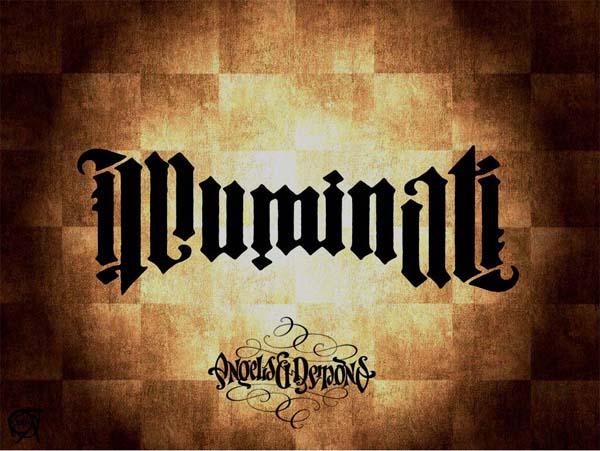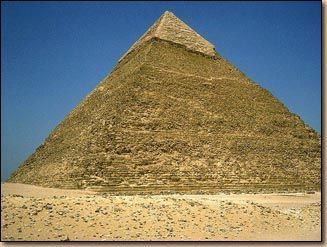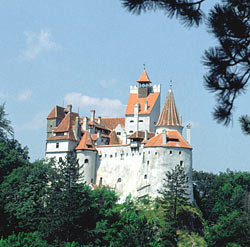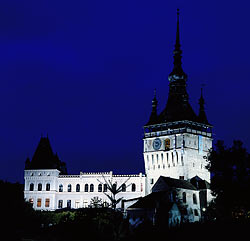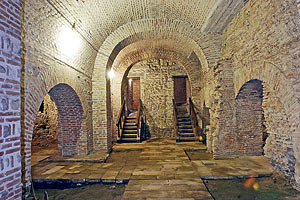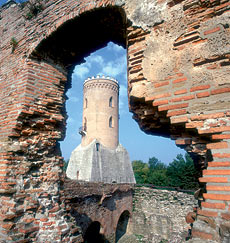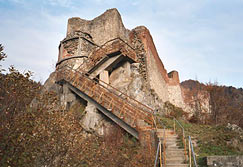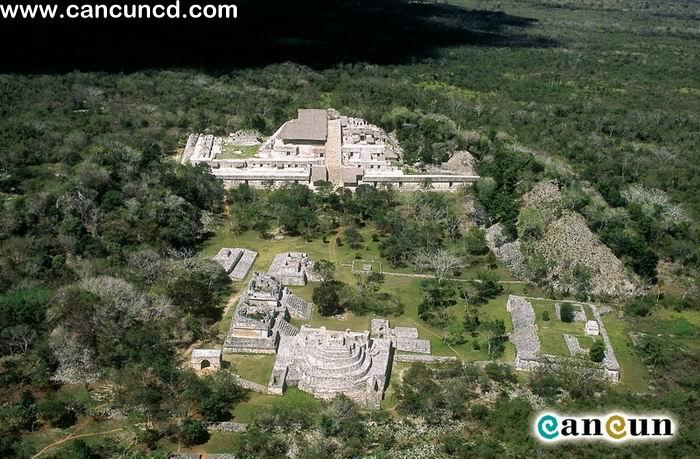» Dracula – Beyond the Legend
Bram Stoker’s inspiration
 Vlad Tepes was born in 1428 in the fortress city of Sighisoara. His father, Vlad Dacul, was the military governor of Transylvania and had become a member of the Order of the Dragon a year before. The Order, similar to the Order of the Teutonic Knights, was a semi-military and religious organization established in 1387 in Rome in order to promote Catholic interests and crusades.
Vlad Tepes was born in 1428 in the fortress city of Sighisoara. His father, Vlad Dacul, was the military governor of Transylvania and had become a member of the Order of the Dragon a year before. The Order, similar to the Order of the Teutonic Knights, was a semi-military and religious organization established in 1387 in Rome in order to promote Catholic interests and crusades.The Order is relevant for the legend, mainly because it explains the name of Dracula. For his deeds, the Order of the Dragon was bestowed upon him, hence the title Dracul (the Latin word for dragon is draco). While in medieval lure dragons served as symbols of independence, leadership, strength and wisdom, the biblical association of the devil with the serpent that tempted Adam and Eve gave the snake-like dragon connotations of evil. Thus, the Romanian word Dracul stands in English for both dragon and devil. Dracula, the title of Vlad Tepes,translates as Son of Dracul.
Moreover, the ceremonial uniform of the Order – black cloak over red accouterment – was Bram Stocker’ source of inspiration for Count Dracula’s look.
But how did Bram Stoker’s story turn into a myth? A partial explanation is provided by the circumstances under which the book was written and received. A genuine epidemic of “vampirism” had hit Eastern Europe at the end of the 17th century and continued throughout the 18th century. The number of reported cases soared dramatically, especially in the Balkans. Then, the epidemic traveled west to Germany, Italy, France, England and Spain. Travelers returning from the East would tell stories about the undead, which helped keep the interest in vampires alive. Western philosophers and artists tackled the issue ever more often. Bram Stoker’s novel came as the pinnacle of a long series of works based on tales coming from the East. Back then, most readers were certain that the novel had been inspired by real facts and that its story was perhaps just a bit romanticized.
Who was Vlad Dracula?
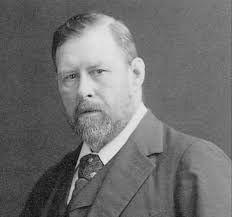 An Intriguing Figure in The Fifteenth Century
An Intriguing Figure in The Fifteenth Century
by Benjamin Hugo Leblanc - EPHE-Sorbonne (Paris) & Laval University (Quebec) CountDracula is more than 100 years old and still alive! Of course, almost everybody has heard about this Nosferatu: through movies featuring Max Schreck, Bela Lugosi, Christopher Lee or Gary Oldman; in several books, including the recent Vampire Chronicles of Anne Rice, or even in bedtime stories told to us in our childhood. We all have an idea of who or what the Count is. However, on the other hand, Vlad Tepes (Dracula), the historical figure who inspired Bram Stoker’s novel, is definitely less well-known.
Vlad Tepes was born in December 1431 in the fortress of Sighisoara, Romania. Vlad's father, governor of Transylvania, had been inducted into the Order of the Dragon about one year before. The order — which could be compared to the Knights of the Hospital of St. John or even to the Teutonic Order of Knights — was a semi-military and religious society, originally created in 1387 by the Holy Roman Emperor and his second wife, Barbara Cilli. The main goal of such a secret fraternal order of knights was to protect the interests of Christianity and to crusade against the Turks. The boyars of Romania associated the dragon with the Devil and decided to call Vlad's father "Dracul," which in the Romanian language means "Devil;" "Dracula" is a diminutive, meaning "the son of the Devil."
In the winter of 1436-1437, Dracul became prince of Walachia (one of the three Romanian provinces) and took up residence at the palace of Targoviste, the princely capital. Vlad followed his father and lived six years at the princely court. In 1442, in order to keep the Turks at bay, Dracul sent his son, Vlad, and his younger brother, Radu, to Constantinople (today Istanbul) as hostages of the Sultan Murad II. Vlad was held there until 1448. This Turkish captivity surely played an important role in Dracula's upbringing; it must be at this period that he adopted a very pessimistic view of life and learned the Turkish method of impalement on stakes. The Turks set Vlad free after informing him of his father's assassination in 1447. He also learned about his older brother's death and how he had been tortured and buried alive by the boyars of Targoviste. 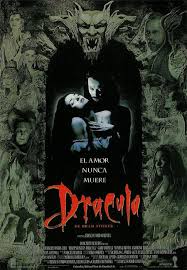 When he was 17 years old, Vlad Tepes (Dracula), supported by a force of Turkish cavalry and a contingent of troops lent to him by Pasha Mustafa Hassan, made his first major move toward seizing the Walachian throne. Vlad became the ruler of Walachia in July of 1456. During his six-year reign, he committed many cruelties, hence establishing his controversial reputation.
When he was 17 years old, Vlad Tepes (Dracula), supported by a force of Turkish cavalry and a contingent of troops lent to him by Pasha Mustafa Hassan, made his first major move toward seizing the Walachian throne. Vlad became the ruler of Walachia in July of 1456. During his six-year reign, he committed many cruelties, hence establishing his controversial reputation.His first major act of revenge was aimed at the boyars of Targoviste for not being loyal to his father. On Easter Sunday of what we believe to be 1459, he arrested all the boyar families who had participated at the princely feast. He impaled the older ones on stakes while forcing the others to march from the capital to the town of Poenari. This fifty-mile trek was quite grueling and no one was permitted to rest until they reached their destination. Dracula then ordered the boyars to build him a fortress on the ruins of an older outpost overlooking the Arges River. Many died in the process. Dracula, therefore, succeeded in creating a new nobility and obtaining a fortress for future emergencies. What is left of the building today is identified as Poenari Fortress (Cetatea Poenari).
Vlad Tepes adopted the method of impaling criminals and enemies and raising them aloft in the town square for all to see. Almost any crime, from lying and stealing to killing, could be punished by impalement. Being so confident in the effectiveness of his law, Dracula placed a golden cup on display in the central square of Targoviste. The cup could be used by thirsty travelers, but had to remain on the square. According to the available historical sources, it was never stolen and remained entirely unmolested throughout Vlad's reign. Crime and corruption ceased; commerce and culture thrived, and many Romanians to this day view Vlad Tepes as a hero for his fierce insistence on honesty and order. It’s worth mentioning that most written sources regarding his reign are based on the numerous propagandistic pamphlets spread by the Germans with the help of their new invention, the printing press.
In the beginning of 1462, Vlad launched a campaign against the Turks along the Danube River. It was quite risky, the military force of Sultan Mehmed II being by far more powerful than the Walachian army. However, during the winter of 1462, Vlad was very successful and managed to gain several victories. To punish Dracula, the Sultan decided to launch a full-scale invasion of Walachia. His other goal was to transform this land into a Turkish province. He entered Walachia with an army three times larger than Dracula's. Finding himself without allies and forced to retreat towards Targoviste, Vlad burned his own villages and poisoned the wells along the way, so that the Turkish army would find nothing to eat or drink. Moreover, when the Sultan, exhausted, finally reached the capital city, he was confronted by a most gruesome sight: hundreds of stakes held the remaining carcasses of Turkish captives, a horror scene which was ultimately nicknamed the "Forest of the Impaled." This terror tactic, deliberately stage-managed by Dracula, was definitely successful. The scene had a strong effect on Mehmed's most stout-hearted officers, and the Sultan, tired and hungry, decided to withdraw (it is worth mentioning that even Victor Hugo, in his Legende des Siecles, recalls this particular incident). Nevertheless, following his retreat from Walachian territory, Mehmed encouraged and supported Vlad's younger brother, Radu, to take the Walachian throne. At the head of a Turkish army and joined by Vlad's detractors, Radu pursued his brother to Poenari Castle on the Arges River. According to legend, this is when Dracula's wife, in order to escape capture, committed suicide by hurling herself from the upper battlements, her body falling down the precipice into the river below, a scene exploited by Francis Ford Coppola's production. Vlad, who was definitely not the kind of man to kill himself, managed to escape the siege of his fortress by using a secret passage into the mountain. He was, however, assassinated toward the end of December 1476.
The only real link between the historical Dracula (1431-1476) and the modern literary myth of the vampire is the 1897 novel. Bram Stoker built his fictional character solely based on the research that he conducted in libraries in London. Political detractors and Saxon merchants, unhappy with the new trade regulations imposed by Vlad, did everything they could to blacken his reputation. They produced and disseminated throughout Western Europe exaggerated stories and illustrations about Vlad's cruelty. Vlad Tepes' reign was, however, presented in a different way in chronicles written in other parts of Europe.


